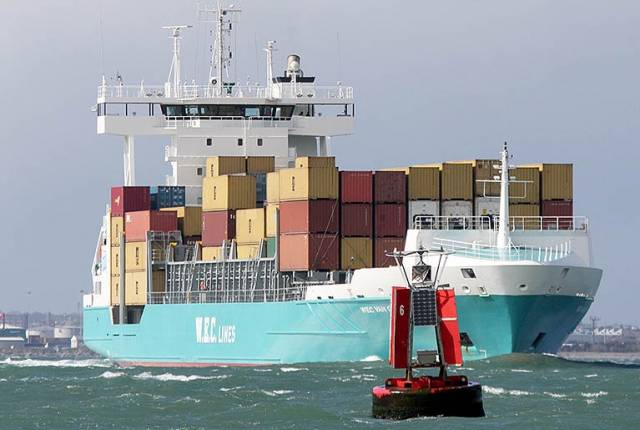Dublin Port’s Masterplan 2012-2040, a framework to guide the future development and operation of Dublin Port, makes provision for periodic reviews. This ensures that the Masterplan reflects changing circumstances such as developments in policies governing planning, national transport, the environment and the economy.
Among the areas to be examined during the consultation are:
- The proposed development of a Unified Ferry Terminal for the Port’s main ferry operators incorporating all facilities required for the State including immigration, customs, security and other border inspection functions.
- The proposed removal of non-core activities from the Port and the redevelopment of up to 22 hectares of lands.
- The proposed reduction over time of the 30 hectares of Port lands occupied by petroleum importation facilities.
- The proposed development and redevelopment of up to 43 hectares of Port lands on the Poolbeg Peninsula including 17 hectares within the Poolbeg West SDZ.
- The proposed development of the 44 hectare Dublin Inland Port adjacent to Dublin Airport to provide facilities for non-core but port-related activities.
Since it was first published in 2012, there have been a number of significant developments which have prompted a review of the Masterplan now. These include:
- Sustained high levels of growth
- Commencement of the Alexandra Basin Redevelopment (ABR) Project and other major port infrastructure projects
- Policy developments at a national, regional and local level
- International developments including Brexit and the possible introduction of customs and other security controls in Dublin Port.

Public Consultation: A Consultation Paper has been prepared to help inform the public consultation, which runs until Tuesday 7th March 2017. Dublin Port is inviting submissions from all those with an interest in the future development of the Port. Public Information Days will take place from 2-8pm in local community venues, where members of the public can meet with representatives from Dublin Port Company in person, learn more about the review and make their views known:
- 13th February: Scoil Uí Chonaill GAA Club, 95 Clontarf Road, Clontarf, Dublin 3
- 15th February: Seán O’Casey Community Centre, St. Mary’s Road, East Wall, Dublin 3
- 16th February: Clanna Gael Fontenoy GAA Club, Sean Moore Road, Ringsend, Dublin 4
The Masterplan Review 2017 will be published in the summer to ensure that the Masterplan will continue to form the basis of future developments at Dublin Port, as trade volumes grow.
Eamonn O’Reilly, Chief Executive of Dublin Port Company, said:
“Dublin Port’s volumes are now 13% or 4.0m gross tonnes higher than they were at the peak of the boom in 2007. When we originally launched our Masterplan five years ago, we assumed an average annual growth rate of 2.5% over the 30 years to 2040. We now believe we need to increase this growth assumption to 3.3%. Under this revised assumption, the Port’s volumes would increase by 265% to 77m gross tonnes over the 30 years to 2040.
“It is prudent that we respond to changing circumstances as they impact on the Port’s operations and capacity to grow. That is why we are reviewing our Masterplan and, as part of this review, I would encourage people to take the opportunity to participate in the consultation over the coming weeks.
“The focus of the review will be on how best we can use our lands to increase the throughput capacity of the Port. DPC believes that the Port can be developed to cater for anticipated volumes through to 2040 within the Port’s existing footprint and without significant major infill works. This will require the maximum utilisation of our brownfield sites and adjacent river berthage.
“The implementation of the next phase of the Masterplan will continue to focus on achieving proper planning and sustainable development through the continued redevelopment of the brownfield sites within Dublin Port’s existing footprint.”
2016 Trade Figures & Growth: Dublin Port’s volumes have increased by 25% in just four years, underpinning the need for the Company’s major capital investment programme to provide essential capacity for future growth. The growth is shown as follows:
| Year | Growth |
| 2013 | +3.0% |
| 2014 | +7.0% |
| 2015 | +6.4% |
| 2016 | +6.3% |
| 2013 to 2016 | +24.7% |
The 6.3% increase in overall volumes in 2016 was relatively evenly spread between imports (which were up +6.1%) and exports (+6.7%).
| Gross tonnes | 2016 | 2015 | % |
| Imports | 20.7m | 19.6m | 6.1% |
| Exports | 14.2m | 13.3m | 6.7% |
| Total | 34.9m | 32.9m | 6.3% |
There was strong growth in the unitised freight modes with Ro-Ro ahead by +7.6% to 944,531 units in the year. Lo-Lo grew even more strongly at +8.1% to 663,732 TEU.
New trade vehicles through Dublin Port increased by +2.0% to 104,185 in the year.
Finally, on the passenger side of Dublin Port’s business, ferry passenger numbers grew by
+0.9% to 1.8m.
| 2016 | 2015 | % | |
| Ro-Ro units | 944,531 | 877,826 | 7.6% |
| Lo-Lo TEU | 663,732 | 613,864 | 8.1% |
| Trade vehicles | 104,185 | 102,149 | 2.0% |
| Passengers | 1,814,089 | 1,797,691 | 0.9% |
| Tourist vehicles | 505,482 | 500,628 | 1.0% |































































